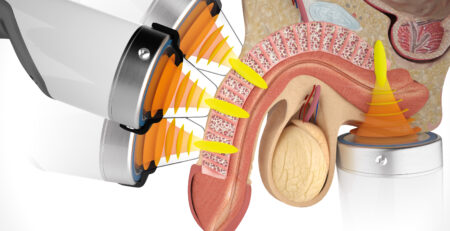Problems with urination become more common with age. In Austria, one in three men over the age of 50 suffers from these problems, which means that over 330,000 men are affected.
How do these problems occur?
Two groups of symptoms can be identified:
the first one comprising so-called irritative symptoms such as the spontaneous desire to void one’s bladder,
the one that re-occurs during the night and the incessant one, caused by running water. The second group includes so-called water retention troubles, among them being the feeling of not having completely voided the bladder after micturition, a weak urinary stream or a considerably long time of urination. Most frequently do they all have a strong negative impact on life. Many of those suffering tend to withdraw from society, let their ways being determined by where a toilet is stay away from cultural life or try to avoid longer journeys by cars or buses. They are prone to get lonely and isolated by keeping up these habits.
Which examination is indicated here?
What is most important here is a broad anamnesis and a minute listing of current medication. Examinations themselves include the measuring of the urinary stream, a urinalysis, an ultra-sonic check-up of the kidneys and the amount of residual urine, which is the amount of urine staying back in the bladder after micturition, the measuring of the prostate size and, last but not least, the determination of the PSA value via blood sampling.
What treatment options are available?
Changing drinking habits and possibly changing medications often bring relief.
Medication
So-called alpha 1 receptor antagonists cause both, the bladder-neck and the prostate to relax. It is the sympathetic nervous system that comes in here. This medication rarely shows by-effects, with the major ones being a reduction of the blood pressure and retrograde ejaculation (the ejaculate goes back into the bladder). Numerous studies have shown that the impact of this medication dwindles gradually in years (only after two years 40 out of a hundred of men experienced this phenomenon).
The second group comprises the so-called 5 alpha reductase inhibitors. Over the course of months, a hormonal approach leads to a reduction in prostate volume and thus to an improvement in the urine stream and a reduction in residual urine volume. The main side effects are an impairment of erectile function and a cessation of ejaculation. So-called gynecomastia (breast growth, pain in the breast) has also been reported.
A new therapeutic approach is Tadalafil. This substance is actually established in the treatment of erection problems. Studies have also shown its effectiveness in urination problems and therefore represents a good therapeutic option. Men often have problems not only urinating, but also erection problems.
Various surgical options
If treatment with tablets is not sufficient, surgery is unavoidable. There are several options:
Surgery of the prostate through the urethra (transurethral resection of the prostate) is the gold standard. This operation is the most common for men over the age of 50 and involves a short hospital stay. Other methods (laser operations – green light laser, holmium laser, water vapor ablation) use the same principle: by reducing prostate tissue in the urethra, the urine stream is improved and the residual urine is reduced. Ultimately, all of these methods are equally effective in experienced hands.




